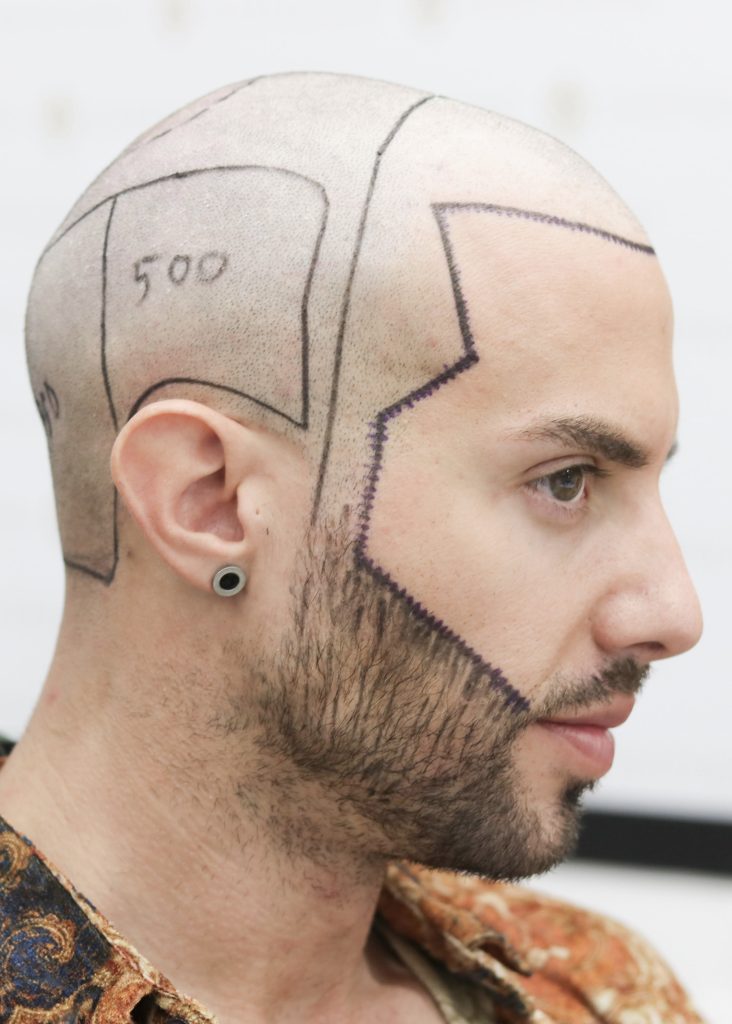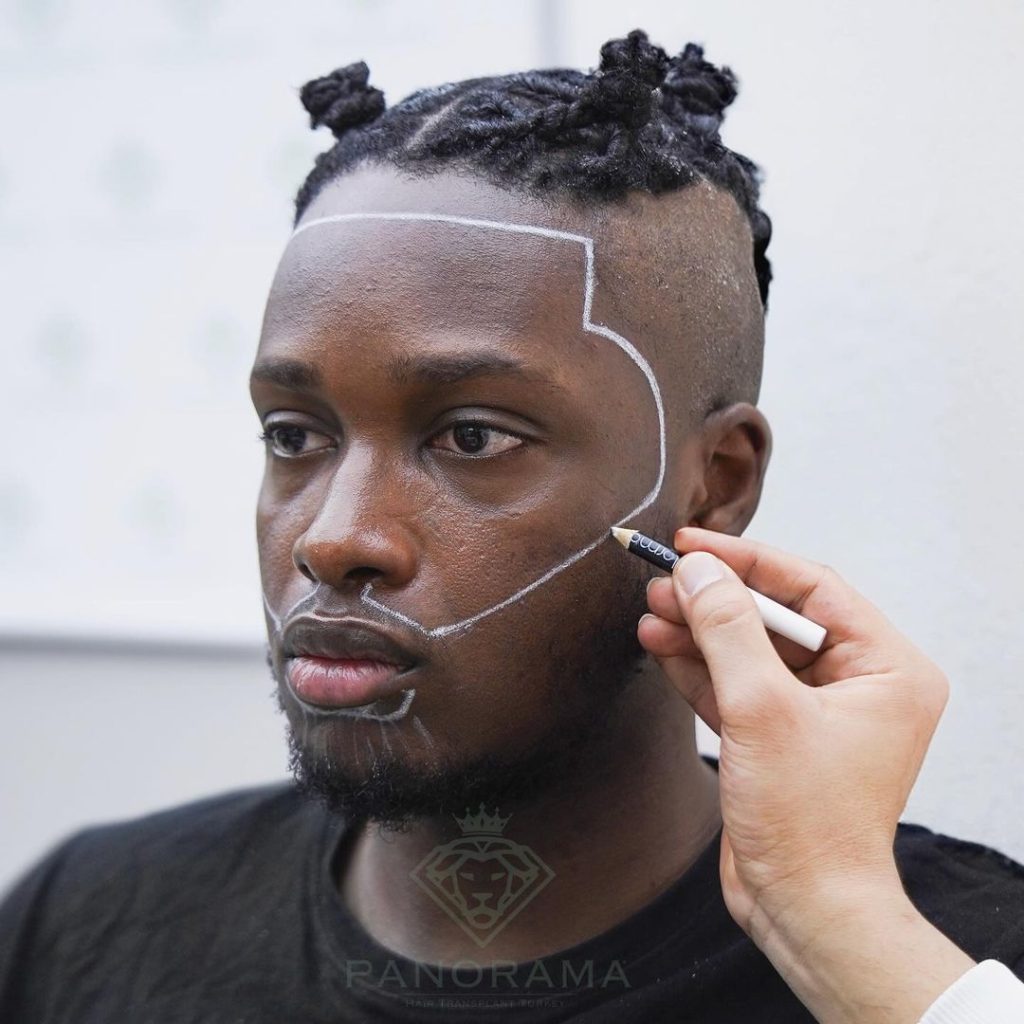Beard transplantation is a surgical procedure performed in men to provide density in the beard area or to cover areas that do not grow a beard completely. This procedure is usually performed with methods similar to hair transplantation techniques, but the target area is the beard and mustache areas.
Beard transplantation is an ideal solution for individuals who have problems with beard growth due to genetic factors, hormonal changes or various reasons. The procedure involves taking healthy hair follicles from donor areas (usually the back of the head) and transplanting them into the beard area. This process is designed to achieve a natural and aesthetic beard appearance.
Beard transplantation can be performed with a variety of techniques, but in general, it is based on the principle of individually harvesting and transplanting hair follicles. As a result, beard transplantation can make a person’s facial features more prominent and increase self-confidence. This procedure, which is planned specifically for each individual, aims to achieve natural and permanent results.
 How to Transplant a Beard?
How to Transplant a Beard?
Beard transplantation is a surgical procedure to increase the density of beard hair on the face or to fill in missing areas. The procedure usually involves the following steps:
Preliminary Assessment and Planning
The beard transplantation process starts with an evaluation with your doctor. At this stage, the current situation in the beard area and donor areas are examined. Your doctor prepares a plan to ensure the natural appearance of the beard and informs you about the procedure.
Anesthesia
Regional anesthesia is applied to ensure your comfort during the procedure. This ensures that you do not feel pain or discomfort during the procedure. After the anesthesia is complete, the area for the beard transplant is sterilized.
Removal of Donor Roots
Hair follicles are harvested from the donor area, usually the back of the head. These follicles are carefully extracted with micro-motors or manual instruments. Sapphire tips or similar modern equipment make this process more precise and effective.
Root Canal Opening and Root Placement
Micro channels are opened in the beard transplantation area where the hair follicles will be placed. These channels allow the roots to be placed at their natural angles and depths. The hair follicles are carefully placed in the opened channels.
Beard transplantation is carefully applied to achieve natural and permanent results. Customized for each individual, this procedure enhances facial contours and improves the appearance of the beard.
Beard Transplant Techniques: Which Methods Are Used?
Beard transplantation is performed using various techniques. These techniques are selected according to the needs of the person and the characteristics of the area to be transplanted. Here are the methods commonly used in beard transplantation:
FUE (Follicular Unit Extraction) Technique
FUE is a method in which individual hair follicles are extracted and placed in the beard area. In this technique, hair follicles are carefully extracted from the donor area of the head with microscopic instruments and placed into small pre-drilled channels in the beard area. The FUE technique leaves minimal scarring and the recovery time is usually fast.
FUT (Follicular Unit Transplantation) Technique
The FUT technique involves removing a strip of hair from the donor area and transplanting it in small pieces to the beard area. This method allows for the transfer of a larger amount of hair follicles, but there is a risk of scarring after the procedure. FUT is generally preferred for more extensive transplantation procedures.
DHI (Direct Hair Implantation) Technique
The DHI technique is a method in which hair follicles are implanted directly into the beard area. In this technique, using a special implanter device, hair follicles are directly implanted without the need for drilled channels. DHI provides higher precision and natural results, and the healing process can be more comfortable.
Sapphire FUE Technique
Sapphire FUE is a more advanced version of the FUE technique. In this method, sapphire-tipped instruments are used to harvest and implant hair follicles. Sapphire tips offer less risk of tissue damage and bleeding during the procedure as they are sharper and more precise. It also helps to achieve natural and aesthetic results.
PRP (Platelet Rich Plasma) Assisted Beard Transplant
PRP is a method used to support the health and growth of hair follicles. During or after the transplant procedure, rich plasma from one’s own blood is injected into the beard follicles. This stimulates the healing and growth of the hair follicles, further improving the results.
Each technique offers its own unique advantages and can be customized to the individual’s needs. Your doctor will offer you the best solution, taking into account your hair type, donor area and wishes to determine the most suitable method.
 Who Are Suitable Candidates for Beard Transplantation?
Who Are Suitable Candidates for Beard Transplantation?
Suitable candidates for beard transplantation are usually evaluated according to some basic criteria. First, it is important that there is a sufficient amount of healthy hair follicles in the donor area. Usually, the back or side areas of the head are used for this purpose. People who genetically have problems with beard growth are suitable candidates for beard transplantation.
In addition, individuals in good general health are preferred. People without chronic diseases and health problems that affect the health of hair follicles usually achieve more successful results. The beard transplantation process requires patience and realistic expectations. People who pay attention to the healing process after the procedure and follow the doctor’s recommendations achieve better results. Finally, non-smokers and those with a healthy lifestyle are among the ideal candidates for beard transplantation.
Care and Recovery after Beard Transplant
Post-beard transplant care is critical for successful results. Immediately after the procedure, it is necessary to keep the area clean and dry. You should clean gently with the cleaning products recommended by your doctor and sleep with your head elevated. The first wash can usually be done after a few days; you should avoid rubbing the scalp during this period.
You should use medicines and creams regularly and follow your doctor’s instructions exactly. In the first few weeks, it may take time for the beard to regain its natural appearance, so you should be patient. In addition, a healthy lifestyle and a balanced diet support the healing process. By avoiding smoking and alcohol, you can make your healing process more effective.
What are the Advantages of Beard Transplantation?
Beard transplantation offers many advantages in terms of aesthetics and personal satisfaction. Here are some of these advantages:
Natural Appearance and Aesthetics: Beard transplantation provides a natural beard appearance. Hair follicles from the donor areas are carefully placed in the beard area, which helps to achieve a natural and aesthetic result.
Increased Personal Confidence: A beard accentuates facial features and can increase attractiveness in men. A full and tidy beard after beard transplantation can increase personal confidence and help you feel better about yourself.
Permanent and Long-Term Solutions: Beard transplantation usually offers a permanent solution. The transplanted hair follicles continue to grow naturally, providing a lifelong beard look. This eliminates the need for constant maintenance and product use.
Fast Recovery Process: Thanks to modern techniques, recovery after beard transplantation is usually quick and comfortable. Advanced methods reduce post-procedure discomfort and allow you to return to your daily activities in a short time.
Customized Results: Beard transplantation is customized to each individual’s face shape and personal preferences. This ensures natural and satisfying results because the transplant process is planned according to individual needs.
Eliminates Aesthetic Problems: Beard transplantation helps to address the aesthetic issues of people who experience irregularity or gaps in beard growth due to genetic or hormonal reasons. This procedure fills the gaps in the beard area and provides a more organized appearance.
Beard transplantation offers significant benefits in terms of personal care and aesthetics. It offers an effective solution for those who want to achieve natural and permanent results and can increase personal satisfaction.
Beard Transplant Results: What to Expect
The results after beard transplantation can often be satisfactory, but it is important to keep some points in mind. Immediately after the procedure, there may be swelling, redness and mild discomfort in the area. These symptoms are usually temporary and subside within a few days. It is normal for beard hair to fall out in the first few weeks; this is the process of the roots adapting to their new environment.
It may take several months to see full results. During the first 3-4 months, the density and growth rate of the beard increases. During this period, the newly transplanted hair follicles become stronger and begin to take on a natural appearance. When done correctly, beard transplantation provides a natural and aesthetic appearance. However, patience is required for the results to be fully realized.
Beard transplantation usually offers permanent results; the transplanted follicles grow steadily over time and provide a lifelong beard appearance. With regular care and attention to health conditions, you can achieve satisfactory long-term results. Each individual’s process and results can be different, so it is important to plan according to your personal expectations.
Frequently Asked Questions
How long does a beard transplant procedure take?
Beard transplantation usually takes between 4-8 hours, but this can vary depending on the size of the area to be transplanted and the techniques used. You will need to sit in a comfortable position for the duration of the procedure and some patience will be beneficial to see the results once the procedure is complete.
When can I return to my normal life after a beard transplant?
The healing process after the procedure may vary from person to person. Most people can return to their daily activities within a few days. However, it is recommended to avoid physical activities and impact to the beard area for the first few weeks. It may take several months for full recovery and results to appear.
How permanent are the results after beard transplantation?
Beard transplantation usually provides permanent results. The transplanted hair follicles continue to grow naturally and provide a lifelong beard appearance. However, maintaining a healthy lifestyle and following your doctor’s recommendations supports the quality and longevity of the results.

 How to Transplant a Beard?
How to Transplant a Beard?  Who Are Suitable Candidates for Beard Transplantation?
Who Are Suitable Candidates for Beard Transplantation?